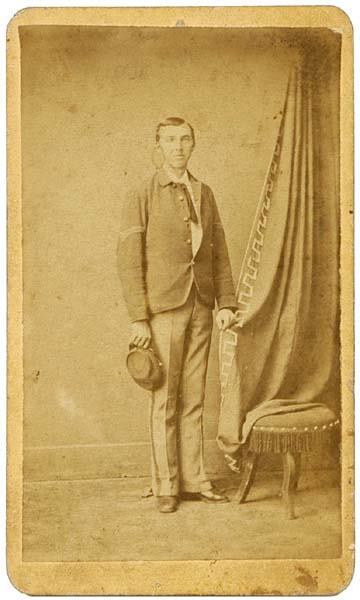
Good morning, New Bern Now readers. Happy tax day. (Kidding … it’s been delayed a month thanks to COVID.) Here’s your morning briefing.
***
Weather
A chance of showers today, with thunderstorms also possible after 5 p.m. Partly sunny, with a high near 73. Northwest wind around 9 mph, with gusts as high as 15 mph. The chance of precipitation is 30%. New rainfall amounts of less than a tenth of an inch, except higher amounts possible in thunderstorms.
Thursday Night, mostly cloudy, then gradually becoming clear, with a low around 48. Northwest wind 6 to 8 mph.
Friday will be sunny, with a high near 69. Northwest wind 5 to 10 mph, with gusts as high as 15 mph. Friday Night will be partly cloudy, with a low around 49. Light west wind.
***
In the News

Without Limits Christian Center is hosting Pasta with a Purpose Spaghetti Benefit Lunch to raise funds for Jazlyn McRavin’s life-saving kidney transplant on Friday, May 14.
Pre-purchased lunches can be picked up at Mac’s Place (our Pavilion on our property at 102 Washington Post Road in New Bern) from 11 a.m. to 2 p.m. Lunches need to be purchased in advance by going to wlcconline.com/shop. Lunches can also be purchased at our Guest Services desk at the church on Sundays or Monday – Friday 9 a.m. – 3 p.m. (cash or check only).
Please contact the office at 252-635-6673 for additional information.
***
New Bern Now Calendar
- 16th: Drive-In Screening of “No Small Matter” Film, gates open at 7:00 p.m. at Lawson Creek Park. Presented by Craven Smart Start.
- 17th: Stuff The Truck, 9:00 a.m. – 11:00 a.m. at Taberna – at the Tennis Court. Presented by Habitat for Humanity of Craven County. Call 252-633-5512.
- 17th: Discover Tryon Palace: Outlander – The Spark of the Rebellion, 9:15 a.m. – 10:00 a.m. at the Palace Gates. Call 252-639-3524.
- 19th – May 7th: Neuse River Senior Games and Silver Arts Competition (thru April 21st).
***
Today in History
From North Carolina Department of Natural and Cultural Resources. For more about North Carolina’s history, arts, nature and culture, visit DNCR online.
On April 15, 1960, about 150 student leaders from 10 states met at Shaw University in Raleigh for the “Southwide Leadership Conference on Nonviolent Resistance to Segregation.” The meeting took place just two months after the Woolworth sit-ins in Greensboro had launched the protest effort.
 The session was designed to consolidate isolated sit-in efforts and map strategy. It was organized by the Southern Christian Leadership Conference whose executive director, Ella Baker, was a Shaw graduate. The conference created the “Temporary Student Nonviolent Coordinating Committee” headquartered in Atlanta.
The session was designed to consolidate isolated sit-in efforts and map strategy. It was organized by the Southern Christian Leadership Conference whose executive director, Ella Baker, was a Shaw graduate. The conference created the “Temporary Student Nonviolent Coordinating Committee” headquartered in Atlanta.
The weekend’s keynote speaker, the Reverend James Lawson of Nashville, criticized established older groups such as the NAACP for moving too slowly and acting too conservatively. The Reverend Martin Luther King Jr. spoke to a large group in Memorial Auditorium, urging students to adopt the nonviolent philosophy of Ghandi and face jail time for peaceful protest if necessary.
SNCC members were the “shock troops” and frontline leaders in the civil rights movement, especially in Mississippi in the summer of 1964. John Hope Franklin called them “probably the most courageous and the most selfless” of the civil rights workers.

On April 15, 1853, Daniel Kanipe, one of two survivors of Custer’s battalion at the Battle of the Little Bighorn, was born in Marion.
Kanipe enlisted in Company C of the 7th United States Cavalry in 1872 and briefly served with the federal forces occupying Lincolnton during the Reconstruction era.
In 1876, Lt. Col. George A. Custer led the 7th Cavalry into present-day Montana, eventually reaching a large Native American encampment along the Little Bighorn River. Underestimating the number of warriors at the camp, Custer decided that a frontal assault was the best strategy. He chose to ride directly towards the Native position with his own battalion, leaving Captain Frederick Benteen’s battalion in reserve.
Kanipe and John Martin, both part of Custer’s battalion, were sent to relay messages to the train of pack mules supplying the unit and to Benteen. With the destruction of Custer’s column imminent, Benteen held his battalion back and refused to allow the couriers to return to battle.
Kanipe was often called upon to relate his experience at Little Bighorn. He became a celebrity among admirers of the “Old West” and researchers of “Custer’s Last Stand.” His recollections became the basis for many of the 20th century accounts of the battle.
***
On April 15, 1861, North Carolina governor John Ellis responded to President Abraham Lincoln’s call for troops with the often quoted statement: “You can get no troops from North Carolina.”
Although North Carolina as a state had seemed moderate during the Secession Crisis of 1861, Ellis had worked behind the scenes to align North Carolina with the budding Confederate government. In February 1861, citizens of the Old North State rejected a call for a Constitutional Convention to even consider the secession question.
Southern state after Southern state declared for secession in early 1861 following South Carolina’s declaration in December 1860. President Lincoln inherited a nation at the breaking point, and he ordered the federal fort in Charleston harbor to be resupplied.

South Carolina forces prevented the effort and fired on Fort Sumter. Lincoln then issued a call for troops to put down the rebellion.
Ellis considered Lincoln’s call to arms an unacceptable power grab, and he immediately ordered state troops to seize the federal forts in North Carolina as well as the federal arsenal at Fayetteville.
He called the General Assembly into session two weeks later and rushed through a bill that called for a secession convention and authorized Ellis to send troops to Virginia. North Carolina left the Union just a few weeks later.
Though Ellis’ pithy last sentence is often quoted, the full text of his reply to Lincoln lays out a number of Constitutional justifications for secession that were popular at the outset of the war.
Final Note
New Bern Now Producer Wendy Card seems to think that In the Now, your morning report (maybe I shouldn’t say morning report; maybe as she suggests I call it a daily briefing look at the day ahead), is New Bern Now Editor Randy Foster’s baby, while she is going to launch her own, competing shall I say, weekly update called Between the Bridges.
Foster will be responding sometime later today after he reviews his copy of “Idiot’s Guide to Making Videos.”
Here is Wendy Card’s challenge.

